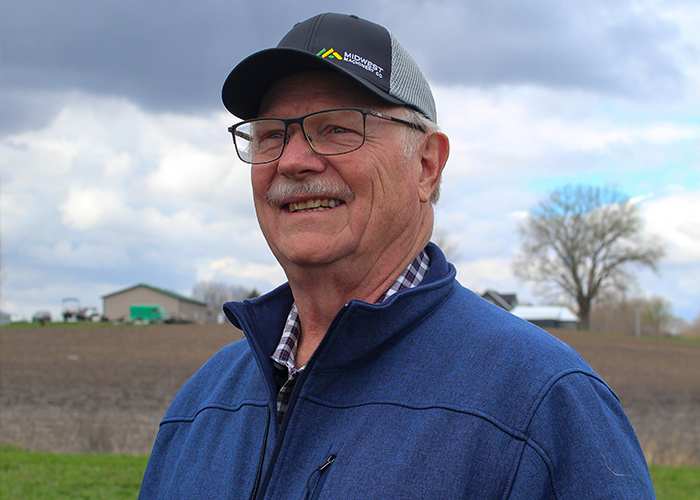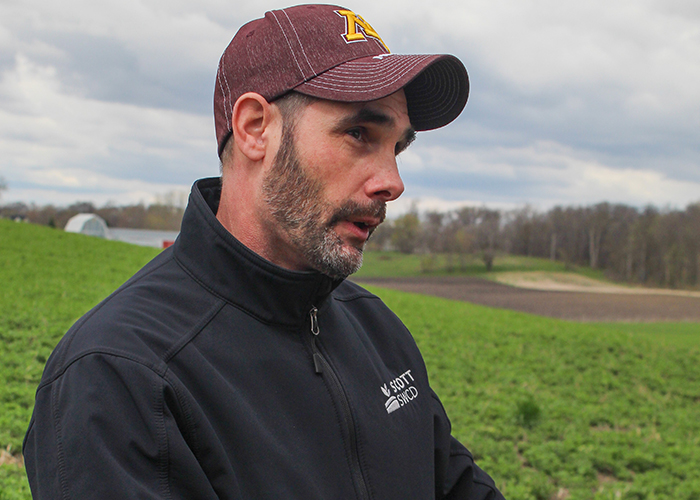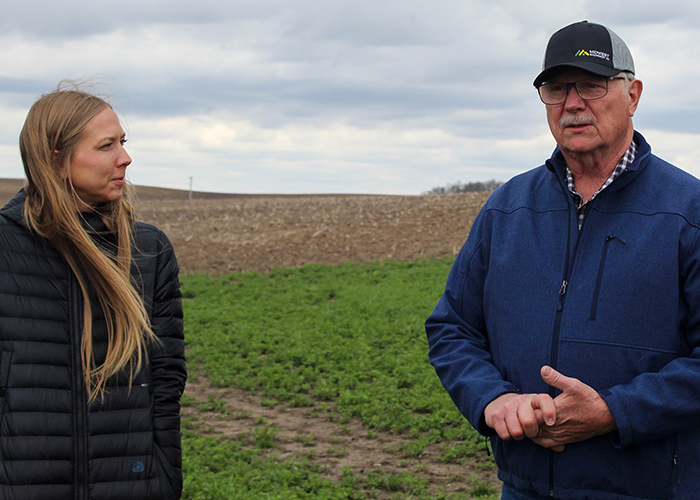In Webster, Minnesota, Bob Meinke carries on the legacy of the 170-acres of farmland his great-great-grandfather purchased in 1858 – the same year Minnesota became a state.
“I got this [land] after, you know, 175 years of family ownership,” Bob said. “I’m hoping my next generation comes here too.”
After his dad sadly passed away in 2012, Bob moved home to the land he grew up on. As he did with his father, Bob is helping keep the land in great shape, and his grandchildren love coming over to take a ride in the tractor and help garden.

Since 2004, Bob’s family has worked with the Natural Resources Conservation Service (NRCS) to address resource concerns on the land such as gullies and erosion. With help from NRCS in partnership with the Scott Soil and Water Conservation District (SWCD), Bob is using conservation efforts such as grassed waterways to make sure the next generation does not inherit eroded land and slow water flow. With technical and financial assistance from NRCS and Scott SWCD, he has implemented conservation practices through NRCS’s (EQIP) aimed at restoring the land his family has owned for five generations.
Recently, Bob noticed erosion gulleys forming again on the farm, so he submitted an EQIP application through NRCS but learned there were no available funds. However, when funding through the Inflation Reduction Act became available, that opened the door for NRCS to provide more than $10,000 in assistance. Conservation practices that establish permanent vegetation can help to stabilize the soil and reduce erosion, while also increasing carbon storage in soils and biomass.
“The NRCS was able to find some funds to help us out, and I greatly appreciated that,” Bob said. “It helped make paying for this process certainly easier.”
Bob, Andy Porupsky (SWCD Resource Conservationist) and Annie Kinkopf (NRCS conservation planner) collaborated on a conservation plan to implement grassed waterways, subsurface drains, critical area planting, and mulching. Construction began during the spring seeding window and finished up in June of 2023. According to Andy, the erosion would have gotten out of control without these practices.

NRCS partnerships such as the one with Scott SWCD are crucial to spreading conservation efforts across Minnesota to families like the Meinkes. Partnering paves the way for the NRCS and SWCD to help more producers than either could do alone.
“Any time we can try to piggy-back off of the NRCS, it’s less funding we have to use,” Andy said. “And we can apply that funding to other landowners and their projects, which in turn means more conservation practices on the land.”

The Meinke family has rented their farm to their neighbors since 1994, and Bob understands the importance of keeping their renter, Steve Schultz, updated regarding how his conservation efforts may impact Steve’s work.
“[Steve] understands that I’m trying to protect the land and [that] I want to be a good steward of the land,” Bob said. Steve agreed that something had to be done on the land where he grows corn, soybeans, and alfalfa.
Bob wants other landowners to know that there is help out there to address their conservation concerns.
“If you ask for help, somebody between [the SWCDs and NRCS], they’re going to do their best to help you,” Bob said. “They have the land to their heart.”
Jacob Gustin is a public affairs specialist for NRCS in Minnesota.


